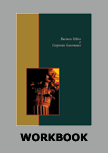The Enron Saga |
ICMR HOME | Case Studies Collection
» Business Ethics Case Studies Please note: |
||||||||||
|
"This case has highlighted to the people how even after 50 years of independence, political considerations outweigh the public interest and the interest of the state and to what extent the government can go to justify its actions and not only before the public but even before the courts of law." - Bombay High Court's passing remark after dismissing a bunch of petitions that had challenged the legality of the Enron power project. "Enron's India odyssey which started with the largest American FDI in India is ending in a whimper." - Business Today, February 21, 2001. IntroductionIn 1996, Rebecca Mark, CEO, Enron Corporation, managed to wrest the controversial Dabhol Power Company (DPC) from the jaws of death. Five years later (2001), the survival of DPC was at stake. Both DPC and the Government of Maharashtra (GoM) have been accused of corruption and economic insanity. With the controversy regarding the price of power still raging and the latest payments crisis that the Maharashtra State Electricity Board (MSEB) faced, both Enron and GoM were desperately looking for a solution.
In Quest of PowerIn June 1992, a team of officials of the Government of India (GoI) toured the USA with the aim of inviting power producers in the USA to invest in India.1 Prior to this, the government drew up a list of projects in which the private sector could participate.
On 15 June 1992, a team of officials from Enron Corporation arrived in New Delhi. On 18 and 19 June, the team visited over half a dozen potential sites in Maharashtra and on 20 June 1992, the MSEB signed a Memorandum of Understanding (MoU) with Enron. The MoU specified that the MSEB would buy electricity and/or capacity from Enron which would build, own and operate (but not transfer) a plant of about 2000-2400 MW capacity.
1] Until 1991, the role of the private sector in the power sector was marginal. The few existing private companies had been operational even before Independence. The role for new participants, although not explicitly restricted by law, was extremely limited. In 1991, the law was amended to allow increased private sector participation. Private players were invited to set up plants for the generation of electricity. |
Case Studies Links:-
Case Studies,
Short Case Studies,
Simplified Case Studies.
Other Case Studies:-
Multimedia Case Studies,
Cases in Other Languages.
Business Reports Link:-
Business Reports.
Books:-
Textbooks,
Work Books,
Case Study Volumes.





